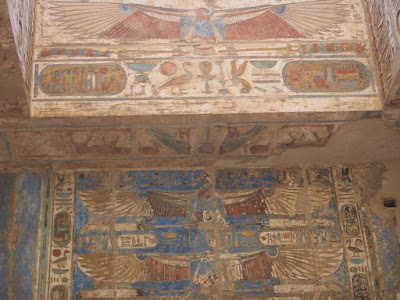A year-and-a-half ago, we went out to an area of remote slickrock in the Escalante area of Southern Utah. Linda was so impressed with the region that she vowed to return and go deeper into that landscape. So, after Hilina and I headed back to Sedona from Big Water, Linda and Kathleen headed off to Escalante. They packed in their gear to go camping off in the wilderness.
After hiking amongst barren slick rock ridges and sandy draws, the girls found just the perfect spot to set up for the night. It was chilly up there at 6,000 feet, but luckily the expected snow and rain held back.
This landscape is made up of Navajo Sandstone, which were formed by ancient sand dunes some 180 million years ago in one of the largest and most long-lasting deserts in Earth's history. The sand dunes likely piled up over 2,000 deep in places and partially form the landscapes that are most familiar to most visitors to the Southern Utah, including Zion Canyon, Arches and Canyonlands National Parks.
All along the slick rock were numerous waterpockets and tinajas. A waterpocket is a depression in the rocks that holds rainwater. Some of these waterpockets can hold water for a few weeks and are home to specialized crustaceans such as Triops that go through their entire lifecycle in just a few weeks before laying dessicating-resistant eggs that can lay in the dried mud for years, sometimes decades, before hatching the next time the pool fills. Due to their light weight, the eggs often blow in the winds when the pools dry to find other pools to colonize. Since these eggs can last up to 27 years, even if they do not land in a pool immediately, they will have more chances over time.
A tinaja is a larger pool in the bedrock that is more permanent in nature. They tend to be fed by springs or seepage and due to their depth are more shaded from the intense summer sun by the surrounding rocks. Tinajas are not only critical sources of water for wildlife in an arid desert, but provide homes for numerous aquatic species such as frogs/toads, crustaceans, and even occassionally at some Sonoran desert sites, desert pupfish.
 |
| Some tinaja are so well established, that riparian vegetation and even trees get established along their banks |
All across the landscape are large boulders of volcanic materials that seem completely out of place. These lava rocks come from layers that were laid well down above this layer (the surface of Boulder Mountain at above 10,000 feet). How did these lava rocks get all the way down here? Well, as the soft sandstone eroded away over time, the more resistant lava rocks rode the dropping elevations down, remaining on the surface.
Linda and Kathleen's goal was to reach the confluence of two rivers. But, as perhaps should have been expected, upon reaching the edge of the river, a narrow slot canyon was encountered. So, while they could skirt the edge of the canyon, there was no going down there.
On of the fascinating features you find in sandstone formations, especially those formed by fossilized sand dunes, are concretions called "moqui balls". These concretions form when iron oxide and other minerals precipitate out of solution from ground water when conditions dry out.
After three days out in Escalante country, they trekked out in advance of an impending winter storm. The day after they returned to Sedona, a huge snowstorm arrived dropping 1/2" of snow in Sedona and several inches in Flagstaff. But, what an adventure.

































































